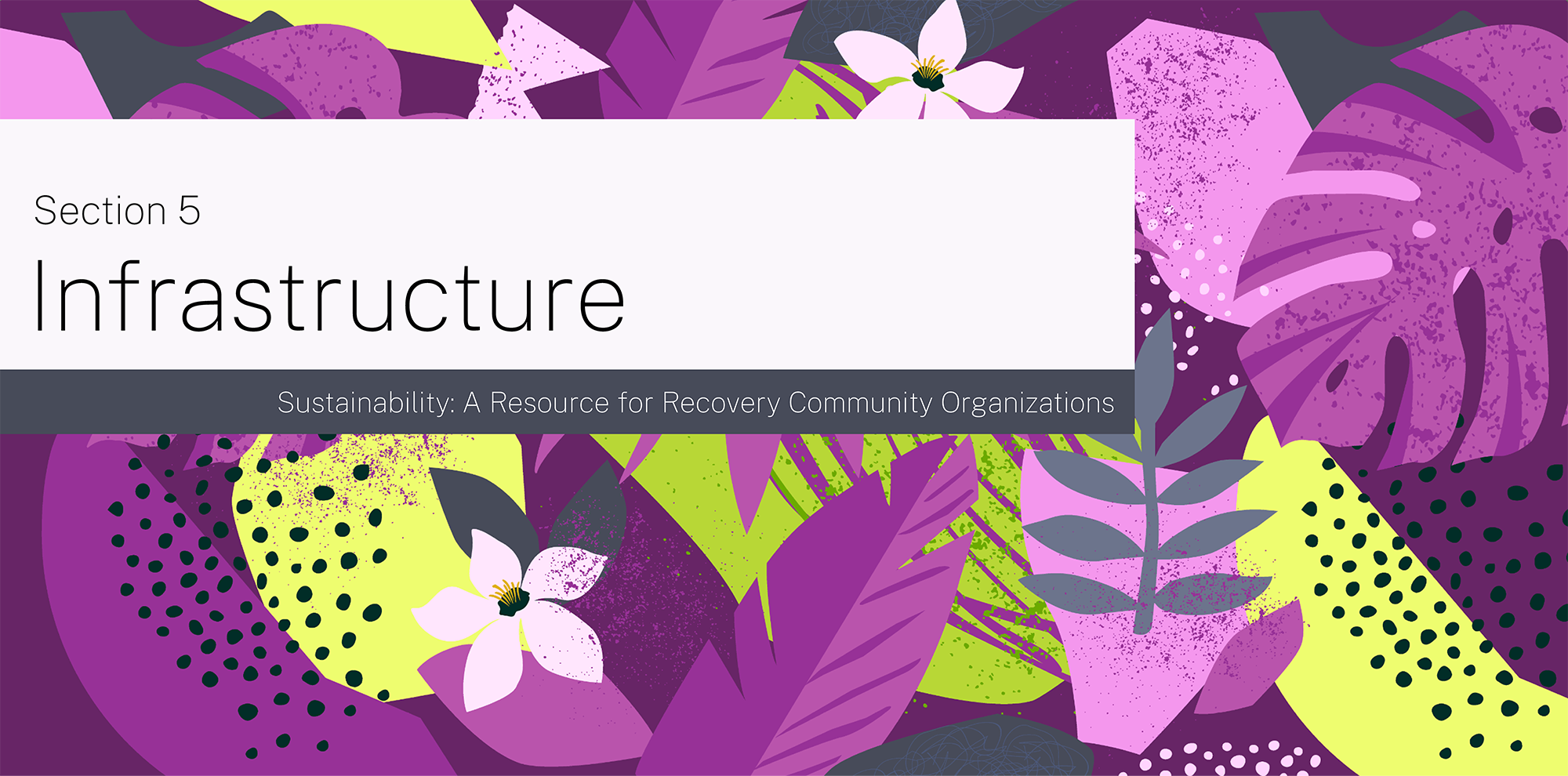
Section 6: Recruitment, Onboarding, and Leadership Development
This section provides details about employee positions, leadership development, and training for creating a sustainable organization.
All organizations, especially RCOs, do not exist but for the effort and commitment of their staff, volunteers, and board members. How RCOs organize and communicate the roles, responsibilities, and respect for these individuals really matters when it comes to their continued involvement and engagement.
When an RCO goes from just an idea to actually hiring people to bring it to life, it's important to clearly define and keep updating the positions and responsibilities of everyone involved. It's no longer just a few individuals working towards a common goal, but a group of people who all have their own ideas about what the RCO wants to achieve. The more clarity everyone has about their roles, the better they can contribute to the cause.
When it comes to employment and volunteerism, RCOs should create inclusive job descriptions and recruitment processes that consciously seek out candidates from diverse backgrounds, especially those who have experienced the social determinants of health inequities firsthand. This approach helps build a workforce that is reflective of the community served. Selecting candidates should be based on a broad understanding of qualifications, recognizing the value of lived experience and diverse perspectives in health equity. A thorough onboarding process should include training on health equity, emphasizing the importance of understanding social determinants and their impact on recovery and health.
As a leader, ask yourself these questions as you move through the Section:
- How can we improve our recruitment and retention practices to better reflect our mission and vision?
- How do we value, honor, and develop our team during their time with us?
Job Descriptions
When did we last review and update job descriptions?
In any RCO, every role plays a vital part in its collective success. That's why it's crucial for each position at an RCO to have a well-crafted job description. A job description outlines the responsibilities, tasks, qualifications, and expectations associated with a particular role. It should provide a clear and detailed explanation of what the job entails, including specific duties and required skills or experience. These descriptions are not just words on paper; they serve as a gateway for current and potential team members to understand the role and its impact on the team. Unfortunately, job descriptions are often recycled over and over, without a critical assessment of what the role really requires.
Here is a step-by-step process for creating an effective job description:
Understand the role: Start by getting a clear understanding of the position you're creating a job description for. Think about the purpose, responsibilities, and objectives of the role. Talk to supervisors or team members for more insights.

Job title and summary: Craft a job title that accurately reflects the role and is easily recognizable to potential applicants. Also, remember to provide a concise summary of the job to give potential applicants a quick overview.

Outline responsibilities and duties: Be clear about the main responsibilities and duties associated with the job. Make sure you outline the individual's tasks, projects, or areas of responsibility in detail, using bullet points and action verbs to make it readable and organized.

Establish required qualifications: Define the necessary qualifications, essential certifications or specific experience required for the position. Differentiate between "must-have" and "nice-to-have" qualifications.

Describe the RCO’s culture and values: Highlight the RCO's culture, values, and mission to give applicants insight into the work environment and help them determine if they align with these values.

Specify reporting structure and team dynamics: Clearly indicate who the individual will report to, any direct reports they will manage, and the team dynamics and collaborations involved.

Compensation and benefits: Indicate the salary or hourly wage range for the role. If possible, provide information about additional benefits such as healthcare, retirement plans, flexible schedules, or vacation policies. If these details are not finalized, mention that they will be discussed in later stages of the hiring process.

Review and proofread: Take time to review and proofread the job description for any errors or inconsistencies. Ensure that the language is clear, concise, and inclusive. Share the description with staff, volunteers, and/or community partners to get feedback and make any needed changes.

Publish and promote: Once the job description is complete, post it on your website, social media, or job portals. Share it with other mission-aligned organizations to attract a diverse group of qualified applicants, and spread the word!
Resource: See the examples of job descriptions from other RCOs below:
Peer Recovery Specialist Job Description
RCO Executive Director Job Description
Director of Program Delivery Job Description
Director of Program Development Job Description
When it is time (or ideally before) to bring on a new employee, meet with current staff doing the job to reflect on and improve the job description to better reflect their work.
Conduct an interview with the staff asking for details about their day-to-day work and explore questions like:
- Are there things you do that aren’t on your job description?
- Are there things on your job description that you no longer do?
- Are there things you wish were in your job description- things that would make your role more fulfilling or more flexible?
- What skills are most valuable in your role?
Reviewing job descriptions does not have to wait until the position must be refilled. Annually updating position descriptions allows leaders to think more strategically about assigning different tasks in ways that make the most sense. It can also be a way to recognize when staff are looking to take on more responsibilities or move into positions that provide more rewarding challenges.
Recruitment and Selection Process
What can we do to get our position announcement in front of the right people? What do we really need to know to figure out if someone will succeed in the position?
Recruiting for an open position should not be left to chance. Finding the right person to join the team is a big decision. If an RCO has an HR department or contracted HR services, they will develop a recruitment strategy or a plan to help the RCO successfully identify, attract, and hire candidates. In smaller RCOs, the executive director and staff will most likely take a lead role in this process. To create a more effective and inclusive selection process, form a small Recruiting and Hiring committee. This approach helps avoid unconscious bias when choosing who to hire, ensuring a wide variety of applicants are considered. It also enhances the skills of the committee members, giving them valuable experience with the hiring process.
Developing leaders and promoting from within is not just a best practice for RCOs, it is fundamental for establishing a sustainable, authentic community-based organization. Ensure that all RCO staff and volunteers are made aware of upcoming open positions and offer them an early application process. For positions with supervisory or heightened leadership responsibilities, discuss promoting and developing an existing staff member and then rehiring for their previous role. See the section of Leadership Development for more information.
Below you will find a recruitment and selection process adapted from from Workable to get you started in creating one specific to your RCO:
- Job Posting: Post the job description on your RCO's website, social media pages, and job boards specific to the nonprofit sector.
Call out box
Where do I connect with diverse candidates?
Sometimes recruiting new staff may require expanding well beyond an organization’s common networks. Post and share the position announcement on social media, LinkedIn, to local nonprofit associations, and partner organizations. If these routes do not lead to a large pool of candidates, consider paying to post the position more widely.
Here are some nonprofit-specific job boards:
- Idealist
- Nonprofit Career Match
- National Council of Nonprofits or you states Nonprofit Council
- Foundation List
Here are some diverse job boards to consider:
- Hire Purpose (military spouses, veterans and service members)
- Hire Autism
- Black Career Network
- Diversity Working
- Recruit Disability
- Pink Jobs (highly skilled LGBTQ candidates)
- We Work Remotely
- Career Contessa (ambitious and highly engaged female talent)
- Female Executive Search (C-Suite female candidates)
- Honest Jobs (candidates with criminal records)
- Application Review: Recruiting and Hiring committee reviews all applications received to determine which candidates meet the minimum qualifications for the position.
- Initial Screening: Recruiting and Hiring committee conducts initial phone or video interviews with selected candidates to gain a better understanding of their qualifications and interest in the position.
- Interviews: Schedule face-to-face interviews for promising candidates with the Recruiting and Hiring committee. This is an opportunity for everyone to see if the job matches well on both sides. Keep in mind, the RCO is looking for someone who not only possesses the required skills and experience but also shares the RCO’s values. At the same time, candidates likely want more than just a paycheck. They’re looking for a role that provides fulfillment, aligns with their professional goals, and offers them a sense of belonging and purpose.
Resource: Check out these Potential Interview Questions for RCO Roles.
- Skill Evaluation: Depending on the role, you may consider having candidates complete a task or project relevant to the job. This will help to assess their abilities. Candidates should be adequately compensated/paid for their time, just like any other employee completing a task.
- Reference Checks: Contact each candidate’s references to verify their past work performance.
- Job Offer: Once a final candidate has been selected, extend a formal job offer. This should include salary details and information about benefits.
- Addressing Background Checks: Most background checks provide information on an individual’s education, employment history, and past criminal records. Criminal record background checks are a complex subject and opinions on the matter vary greatly among RCO leaders. Many RCOs conduct background checks for specific roles to identify any serious issues that could impact a person’s ability to work in a certain position or due to legal requirements within certain grants or contracts funding the position. If an RCO chooses to perform background checks, a corresponding standard, written into policy and procedure that identifies disqualifying offenses, must be in place and applied fairly and consistently across all job candidates.
The process of conducting a criminal records background check needs to be transparent and respectful towards the candidate. It involves four main steps: disclosing to the candidate that a background check is required, obtaining the candidate's consent, conducting the background investigation, and reviewing the report. It’s important to note that whatever the background check reveals, RCOs are obligated to provide candidates with written notice of the specific item in the background check report that is considered job-related and provide the applicant with a copy of the report. There may be a valid explanation for a potentially disqualifying entry and these reports are often inaccurate, so give candidates an opportunity to verify or challenge the information.
It's also important to distinguish between arrests and convictions. An arrest record does not inherently indicate any wrongdoing; people can be arrested for various reasons, including being at the wrong place at the wrong time.
For candidates who are ruled out from the position they applied for, look at other roles or opportunities that are financed through unrestricted funds or general operating capital.
The EEOC provides information about Enforcement Guidance on the Consideration of Arrest and Conviction Records in Employment Decisions under Title VII of the Civil Rights Act and the legality of considering arrest and conviction records in employment decisions. Laws vary by state as well.
- Onboarding: Once the offer has been accepted, schedule an onboarding session to introduce the new hire to the team, discuss expected duties and responsibilities, and provide training as needed.
Onboarding Process
How can we make the onboarding process more comprehensive and inclusive as well as less overwhelming?
Onboarding is more than just familiarizing new employees with their roles- it is an introduction to the RCO’s culture. Having an onboarding process allows new team members to connect with colleagues, supervisors, volunteers to learn about the RCO and its programs. Too often, new employees are thrown into a role without enough guidance, which leads many people to feel underappreciated and overwhelmed. Consider partnering new employees with experienced staff for mentorship and guidance. Sometimes it works well when the mentors serve in a different role or on a different project than the new employee. Having a designated person readily available to answer questions and provide guidance can greatly reduce stress and confusion.
It can also be helpful to schedule one-to-one time for new team members to meet with staff and seasoned volunteers. This helps provide them with a more holistic perspective of the RCO, its teams and programs, and will build relationships. Don't hesitate to involve new team members in existing projects. This will allow them to observe and participate right from the start.
Although onboarding is often considered a process that lasts a week or a month, it usually takes about a year for someone to feel comfortable and fully engaged. Keeping this in mind, draft a detailed plan for the first month and a general plan for the following three months. Incorporate self-learning activities, like readings, webinars, podcasts, and training that align with upcoming projects, activities, or meetings. This approach will boost new team members’ confidence as they take on responsibilities of their role. Having a long-term plan also helps avoid overwhelming orientations and ensures continued support.
There are necessary pieces of onboarding - completing I-9 and W-9 paperwork, providing and talking through an explanation of benefits, employee policy and procedures handbook, HIPAA and OSHA compliance, daily practices around timekeeping or office management, etc.
There are important pieces of onboarding - describing and walking through the organizational structure, the purpose and role of different teams, and any specifics around team meeting times or supervisor reporting practices.
During the onboarding process, encourage new team members to observe different aspects of the RCO. After a month or two, check in with the new team member to discuss their observations about the RCO’s culture and practices, ask about any questions they may have, and any changes they'd like to see. Also, ask what worked well in their onboarding process and what was confusing or challenging, and make changes to the process based on their feedback.
Onboarding is an ideal occasion to reevaluate organizational culture, values, and practices.
Resource: Think through the suggestions above and use this template to create an Onboarding Checklist for your RCO.
Leadership Development
How are we developing the leadership capacity of staff?
Nurturing and developing leadership is a cornerstone of RCO principles and values. Not only does it ensure the continued success of an organization, but it also embodies the RCO’s spirit of growth and empowerment.
Investing in and developing staff is a concrete way for RCOs to practice organizational values, to show commitment to staff, and to develop organizational culture. But the pressing issues of everyday operations, meeting project goals, and “putting out fires” might seem to consume all of the current leadership’s attention and resources. When everything feels like a priority, it may feel like there's simply no time to focus on intentionally cultivating leaders within your RCO. However, investing even a small amount of time (even an hour each week!) into leadership planning and development will provide immense benefits in the long run. This proactive approach can prevent many potential problems before they even occur, saving you the time and energy that would otherwise be spent in crisis management. Remember, if a written plan isn’t in place, leadership development will likely fall to the wayside.
Identifying and nurturing potential leaders sends a clear message that an RCO values its employees and is committed to their growth. Here are steps to consider:
- Identify emerging leaders within the RCO: Look for individuals who show initiative, are respected by their peers, and have a clear understanding of the RCO's goals. Provide these individuals with opportunities to take on leadership roles in smaller projects or teams, allowing them to grow and develop their skills. For instance, you might notice a team member who consistently shows exceptional organizational skills. This individual always meets deadlines, keeps team meetings on track, and manages their tasks efficiently. You could assign them the role of a project manager for a new program to further develop these skills.
- Establish a mentorship program: Pair up emerging leaders with current ones. This will allow the current leaders to guide and support the upcoming ones, sharing their wisdom and experience. This one-on-one relationship can provide valuable insights and personal development opportunities. Establishing a mentorship program doesn't have to be limited to internal staff. Pairing emerging leaders with mentors from other mission-aligned organizations can offer unique benefits. These leaders will gain new perspectives, learn different strategies, and broaden their understanding of the field. It also strengthens the RCO’s external relationships and promotes collaboration.
- Offer training and workshops: Seek out and identify leadership training opportunities on a variety of topics such as decision making, strategic planning, team building, and conflict resolution. Providing regular access to training opportunities ensures that emerging leaders are always learning and improving their skills. Coursera, EdX, and FutureLearn all offer free or low-cost online courses on a variety of leadership topics.
- Encourage feedback and open communication: All leaders should be able to give and receive feedback effectively. Establishing a culture of open communication enables emerging leaders to understand their strengths and look for areas for growth. For example, after each team meeting, you could have an emerging leader lead a quick debriefing session where everyone is encouraged to share their thoughts on what went well and what could be better. This practice allows emerging leaders to strengthen their skills in soliciting and responding to feedback.
- Foster a culture of continuous learning and development: Encourage everyone in the RCO to continuously seek out new knowledge and skills, and to share what they've learned with the rest of the team. For example, a team member who attends a workshop on fundraising strategies could lead a meeting to share what they've learned with the rest of the staff.
Additionally, a key focus should be on nurturing leaders who understand and are committed to health equity. This involves providing training and development opportunities that emphasize the importance of social determinants of health and how they affect recovery. Encouraging and supporting diverse representation in leadership roles ensures a variety of perspectives in decision-making, essential for addressing health inequities effectively.
Creating and implementing a leadership development plan is more than a long-term commitment to the growth and stability of an RCO. It’s also preparing leaders to venture out beyond the walls of the RCO, equipt with the ability to influence, inspire, and make a difference in the behavioral healthcare field. Whether it’s in advocacy, research, community engagement, or policy reform, developing leaders is a core function of RCOs.
Succession Planning
How can we prepare for leadership transitions in advance of people leaving?
Succession planning is key to strengthening your RCO’s culture and ensuring sustainability. It is the intentional process of identifying and developing staff from within the RCO to fill key leadership roles when they become vacant. Planning for future leadership helps make sure an RCO can maintain and grow its programs, and stay strong and stable over time.
Succession planning also helps RCO leadership and board members take a closer look at their current management structure and job roles. Many RCOs don't routinely evaluate these, so they might not be fully aware of all the important duties the executive director and senior staff have. By examining current job duties and reporting systems, the leaders and board can make a better succession plan.
Developing succession plans for leadership positions in advance of those positions being vacant helps ensure that the transition from one person to the next is as smooth and supportive as possible. Often, RCOs have trouble finding people to take on the unique roles and work of the organization. By focusing on developing and supporting existing staff through professional development and future promotion into roles of leadership, RCOs can cultivate the leaders needed for the RCO to succeed.
When RCOs neglect planning for eventual leadership succession, they often experience significant loss in organizational history, energy and momentum, and trust. Succession planning forces leaders to share their historical knowledge, connect others within their networks, and document their practices and work. When leadership roles are empty, community members, donors, and staff can become worried about what may happen and who might take on the position. Succession planning remedies this by outlining a process and timeline for the transition.
Resource: See this article from Medium for a Checklist for Onboarding a New Nonprofit Leader (i.e. executive director/CEO for RCOs)
Words of Wisdom from the Field
Annie Powell, founder, One World Recovery Network
”When I was the new incoming executive director of an organization, the staff did not know me and they did not know what was happening. Outside of the board meetings where my selection was discussed, there was no communication from the ED, board, etc., to the organization, the community, or to other stakeholders.
I experienced resistance from my first day - from both the founder and the staff. The board was excited about the new perspectives that I was bringing to the role, but the board was relatively new and they did not have the organizational historical knowledge that I needed to be successful. They also had limited experience and knowledge in being able to offer me mentorship and development. As a result, most of my time was spent putting out fires, piecing together infrastructure details, and rebuilding pieces of the organization that were lost in the transition.”
Succession planning involves documenting the work key leaders do, from the details of in-office procedures to their communications and cultivation processes with donors. Succession plans also include an outline for supporting the development of the intended successor to the position, or it outlines a timeline and structure for finding a new person for the role. Here is a detailed step by step resource from the National Institutes of Health.

Section 6: Pause & Reflect
At the end of each section, take time to reflect on what was presented, consider how it applies to your unique situations, structures, and goals of your RCO, and identify possible next steps.
- What information or ideas were new, interesting, helpful, or hopeful in this section?
- How does this section guide your organization in adapting, improving, or building upon the RCO Guiding Principles and Practices listed below? For each point, consider "What is going well?" and "What could be better?"
- Led and governed by members of the recovery community
- Grassroots, local, community-based decision-making
- Participatory practices are emphasized, promoting community involvement and collaboration.
- All pathways and recovery journeys are honored and celebrated
- Diverse, equitable, and inclusive policies, practices, and services
- Recovery oriented language that is strengths-based and person-centered
- What areas of your organization do you think might need some work or review?
- What is one small step you can take in the next 2–3 weeks to begin doing that work or review? (This could be emailing someone to schedule a meeting, finding and printing the most up to date draft of something, or asking someone to review draft language.)

CAPRSS Considerations
At the end of some sections in this guide, you will find a segment titled “CAPRSS Considerations”. These segments highlight particular aspects of Council on Accreditation of Peer Recovery Support Services (CAPRSS) standards that relate to the section topic. See the paragraph below for more information on pursuing CAPRSS accreditation.
CAPRSS standards hold that the program has clearly defined processes for screening, selecting, and orienting peer leaders and regularly updating job descriptions reflecting the ever-growing needs of the organization and the recovery community. Effective and comprehensive hiring practices can ensure that suitable candidates are selected for peer leader roles. Documentation of leadership development and well-organized succession plans contribute to the growth and long-term retention of peer leaders.
CAPRSS’ people-related standards in the domains of Peer Leader Development, Peer Supervisor Development as well as performance related standards of Supervising Peers Providing Services in the performance-related standard domain of Peer Support: Core Competencies highlight the intentionality of growing peers, the peer workforce, and giving access and opportunity to people in a pathway of recovery who have chosen to utilize their lived experience to make an impact in their community.


